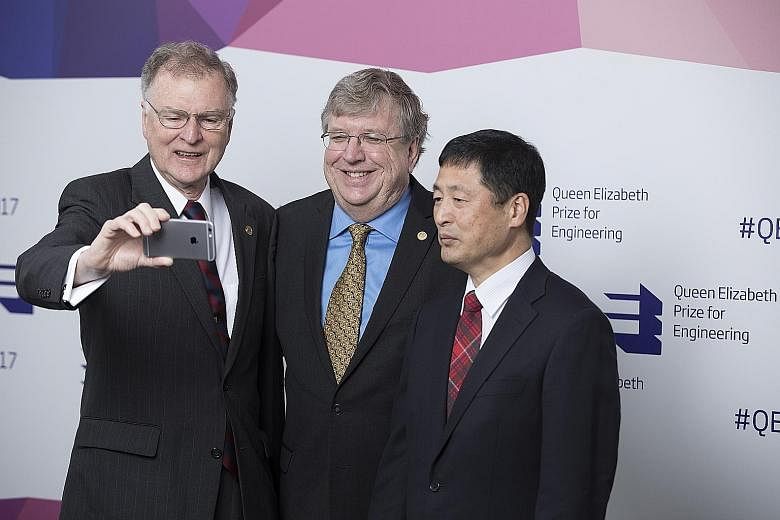LONDON • Four engineers who developed the imaging technology used in digital cameras have won the highest international engineering prize.
The £1 million (S$1.8 million) prestigious Queen Elizabeth Prize for Engineering has gone to Dr Michael Tompsett, Dr Eric Fossum, Dr George Smith and Professor Nobukazu Teranishi.
Their work, spread over three decades, led to the creation of digital cameras that are cheap and small enough to fit on a fingertip, and whose pictures can be shared instantly through the Internet, said Britain's Telegraph. The Royal Academy of Engineering judging panel said the inventors' work had "revolutionised" the world.
Skyping, selfies, computer games and streamed digital films would not be possible without their inventions. The imaging technologies have also helped capture stunning views of planets and distant stars and galaxies, said the BBC.
Lord Brown of Madingley, who chairs the biennial prize - first awarded four years ago to Sir Tim Berners Lee for inventing the Internet - praised the "international collaboration" of this year's winners, adding they had touched the lives of people worldwide and created a new form of communication.
"They have revolutionised the way we capture and analyse visual information. We deliberately chose an engineering invention that is sustainable and has a proper commercial application," he added, noting that digital cameras have applications as diverse as science, astronomy, medicine - and even driverless cars.
More than 100 cameras are manufactured a second around the world using technology developed by the winners, with three billion images taken on them shared every day, said the Telegraph.
The four winners' breakthroughs were the charged coupled device (CCD), the pinned photodiode (PPD) and the complementary metal oxide semiconductor (CMOS) image sensor.
The digital image revolution started in the 1970s with the CCD, which converts light into an electrical signal, meaning an image can be stored digitally. Dr Smith and Dr Tompsett pioneered this technology while working at Bell Laboratories in the United States.
Prof Teranishi invented the PPD while at electronics giant NEC the following decade. The PPD miniaturised light-capturing pixels, resulting in more detailed images.
In the early 1990s, while working at Nasa, Dr Fossum came up with the CMOS image sensor, which led to the creation of "cameras on a microchip", further reducing their size and cost.
Dr Tompsett, however, told the BBC he has some mixed feelings about his invention. While he felt some pride, he said he also felt "frustrated" when he sees people taking selfies and photos of everything in sight.
Correction note: This story has been edited to clarify that Dr Fossum came up with the CMOS image sensor, and not the CMOS technology.

